You’ve worked hard to understand who your audience is and what they care about. You did your best to design your eCommerce site with their needs and preferences top of mind. But for all your good intentions, you’ve hit up against an inevitable complication. Your audience isn’t a monolith.
Each visitor that comes to your website has their own set of needs and preferences. You want to be user first in your design, you really do, but how do you account for the differences between your visitors?
If you run a pet eCommerce store, someone who comes to your site for bird supplies won’t get much out of all the cat content on your website. So how do you make sure their experience is a good one as well?
It’s not impossible, you just need to start incorporating personalization into your design.
5 Reasons to Use Personalization on your eCommerce Site
Incorporating personalization into your eCommerce store requires investing in the right technology and doing more work. So for small eCommerce businesses on a budget, you may wonder if you really need to bother.
The choice is up to you, but the investment can pay off in the form of a few notable benefits.
1. You can reach more people more effectively.
When our hypothetical bird owner lands on the web page of an eCommerce site that’s dominated by dog and cat content, they may well feel this brand just isn’t from them. That’s a shame if the bird products and content are there, just not front and center. You’re more likely to capture their attention, make them feel welcome, and keep them around if you ensure the page they land on is tailored to their interests.
By delivering a more personalized experience as often as possible, you can ensure more of the visitors that come to your website find information they care about. That increases the likelihood that they’ll appreciate their experience with your brand, and choose to do business with you.
2. It makes visitors feel seen.
Website personalization isn’t quite on par with walking into a bar where everyone knows your name, but it’s as close an eCommerce site is likely to get.
A 2018 Accenture study found that 91% of consumers are more likely to choose businesses that recognize them, remember them, and offer relevant offers and recommendations. When a brand can demonstrate that it recalls a consumer’s past interactions with them and use that knowledge to make new experiences more meaningful as a result, it helps you create a better relationship with your customers.
3. It improves their website experience.
Personalization makes it that much easier for visitors to find what they’re looking for. They don’t have to go digging on the site to find your bird cages and seed—it will be right there on the first page they click onto. That increases convenience, saves them time, and means a better experience on your site.
4. It increases on-site engagement.
When the content and products featured on a page are customized based on the visitor’s interests, they’re more likely to take an action that keeps them on the site longer. They may add more items to their shopping cart because they keep seeing products highlighted that match their needs, or click on more content because all the headlines they see relate to actual needs they have.
Website visits are nice, but engagement metrics are a far better measure of how well your website is performing. Personalization is a smart way to get engagement up.
5. It increases conversions.
You want your eCommerce website to provide value to visitors. But at the end of the day, your site exists for a reason. You need visitors to take specific actions—conversions, in the marketing parlance. The main type of conversion you want is for visitors to make a purchase, but it’s also valuable to encourage actions like signing up for your email list or adding a product to a list to revisit later.
Whatever actions you want your visitors to take, personalization is a smart strategy for getting them to do so. According to HubSpot research, personalized calls to action (CTAs) perform 202% better than basic ones.
15 Ways to Personalize Your Visitors’ Experience
You can add personalization to your eCommerce website in a number of different ways. Here are fifteen specific personalization tactics to consider.
1. Recommend products based on past views and purchases.
When you have data on which products a visitor has viewed before, you can turn that into personalized product recommendations on subsequent visits. eCommerce personalization software can help automate this process, by selecting products that your website analytics suggest visitors will be interested in based on the past products they’ve viewed or purchased.

2. Provide related product recommendations.
Someone looking at bird seed may also be interested in bird toys. Someone checking out a sleeveless dress may be interested in other dresses in a similar style. You can make an educated guess about what other products a visitor might like based on what product pages they visit.

Related product recommendations make it easier for customers to find products they’re interested in, and can increase order size as a result.
3. Provide personalized recommendations based on an interactive quiz.
A lot of personalization options use data and automation to generate custom experiences for visitors. But a more straightforward option is asking them outright what they need. A number of eCommerce brands have started to go this route by providing visitors with an interactive quiz right off the bat.
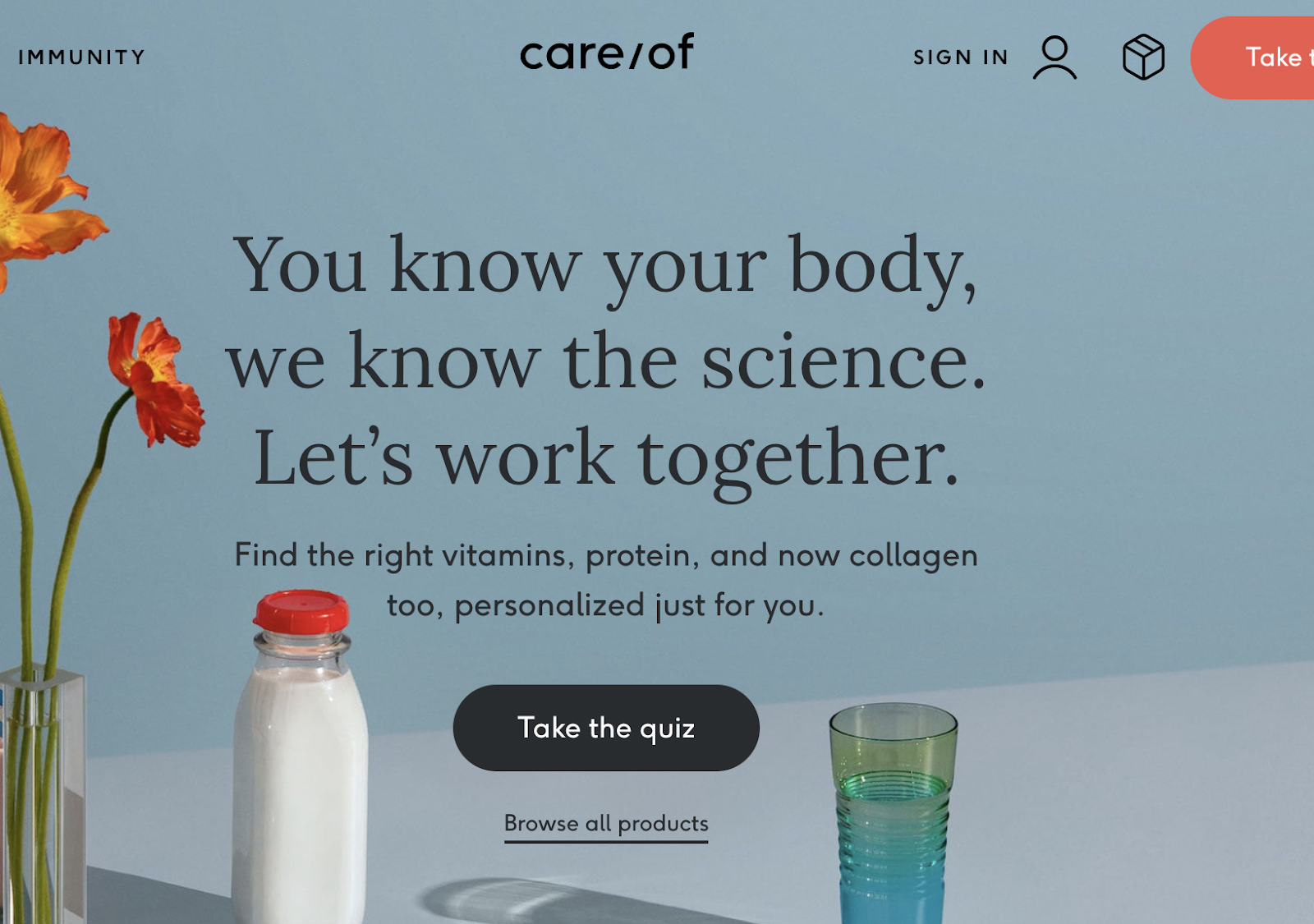
Customers provide their answers, and at the end of the quiz they’re given personalized product recommendations based on the information they offered.
4. Provide content recommendations.
For brands doing content marketing, the same idea that fuels product recommendations can be put toward driving more views to your content as well. The pages someone visits on your website tells you a lot about the kind of content they’re likely to be interested in. You can provide relevant, personalized information based on their behavior.
We do this here on the Virtue Media blog. You’ll see an example of it in action when you get to the end of this post.

5. Customize based on geography.
One of the big benefits of eCommerce is that your customer base doesn’t have to be limited by geography. You can sell to customers around the country—and even expand abroad (if you’re up for the extra challenges that come with that).
But in many cases, different information will be more useful to potential customers based on where they are. For instance, if you have multiple physical locations in addition to your online store, your website could automatically communicate to visitors which store is closest.
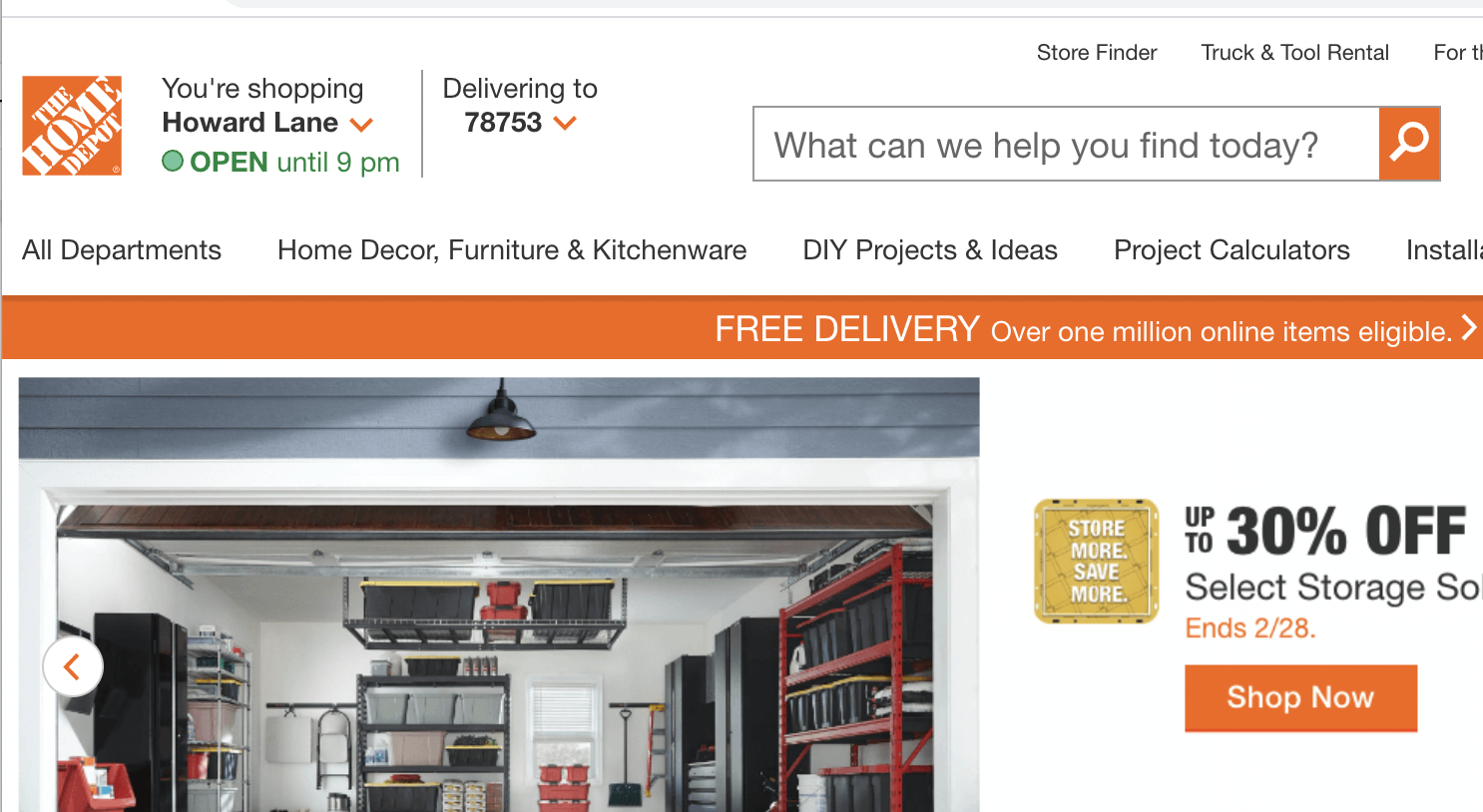
If you have inventory stored in multiple warehouses, you may determine the cost of shipping is only worth it for customers located close to where an item is stored. In that case, you can use geographic personalization to provide accurate inventory information based on where a customer is located.
And you can even provide customized recommendations based on what items are popular in a particular geographic area, like Home Depot does on their homepage.
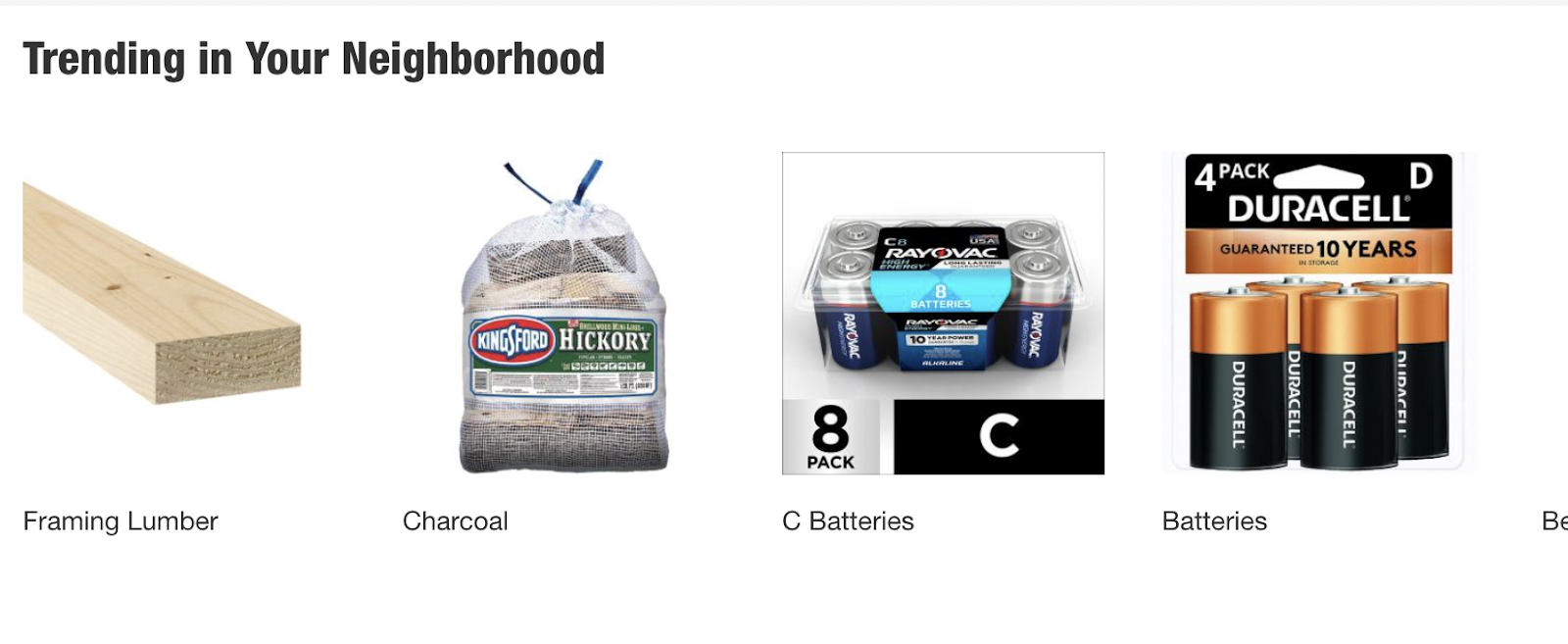
6. Create personalized calls to action.
Earlier in this post we referenced HubSpot research about how effective personalized calls to action are. On that very post, HubSpot includes a good example of what that looks like. The CTA they include is tailored to match the content, so it’s highly likely that the person reading will be interested in it. Someone reading about CTAs is interested enough in the topic that downloading CTA templates makes sense.
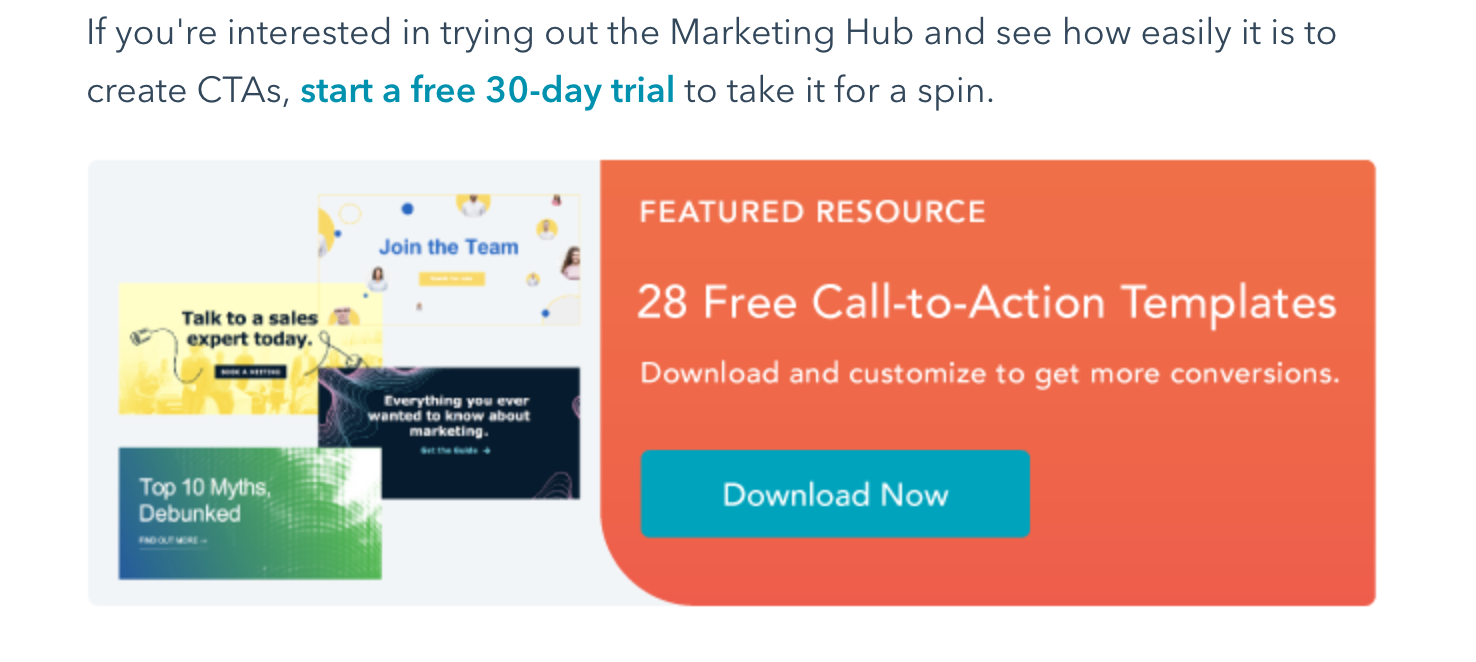
Bring that same energy into the CTAs you include throughout your eCommerce site. Don’t just use the same generic CTA across the whole website, make sure you customize them to better match the visitor’s intentions.
7. Greet logged in visitors by name.
If someone is visiting your website for the first time, this type of personalization likely isn’t possible. But for a customer that’s created an account on your website, you have more information to work with to personalize their experience. One small thing you can do to more clearly welcome them and make their visit more personal is to greet them by name.

8. Personalize your download offers.
A common tactic used in content marketing is to offer free downloads as a way to generate leads. Visitors will often gladly provide their email address in exchange for a piece of content they consider worth the exchange. But this is another tactic that’s much more effective if you make sure the download offer you provide on each page is relevant to that particular visitor’s interests.
If they’re on a page where all the information’s about a kitchen renovation and you offer a download that promises information about building a garden, you’re unlikely to get many takers. Make sure your offers make sense contextually on your website.
9. Enable wishlist functionality.
Allowing your visitors a way to make their own lists of products offers a few distinct benefits. A wishlist gives them a way to let friends and family know which products would make a good gift. It gives visitors a way to make note of products they may want to buy later. And it offers more options for personalization.
You’re giving visitors more power to personalize their website experience based on their own preferences on the site, so they can come back to a tailored list of what they like on future visits. And it gives you power to provide personalized recommendations based on what visitors have outright told you they want to buy.

10. Supply a custom experience with chatbots.
Chatbots are popping up around the web, and for good reason. Anytime someone comes to your website looking for something specific, or with a particular question they need answered, a chatbot is a quick and easy way to give them the information they need.
A chatbot creates an interactive, personalized experience. Visitors communicate what they want, and the bot directs them to where to go—easily matching their website experience to the preferences they express.
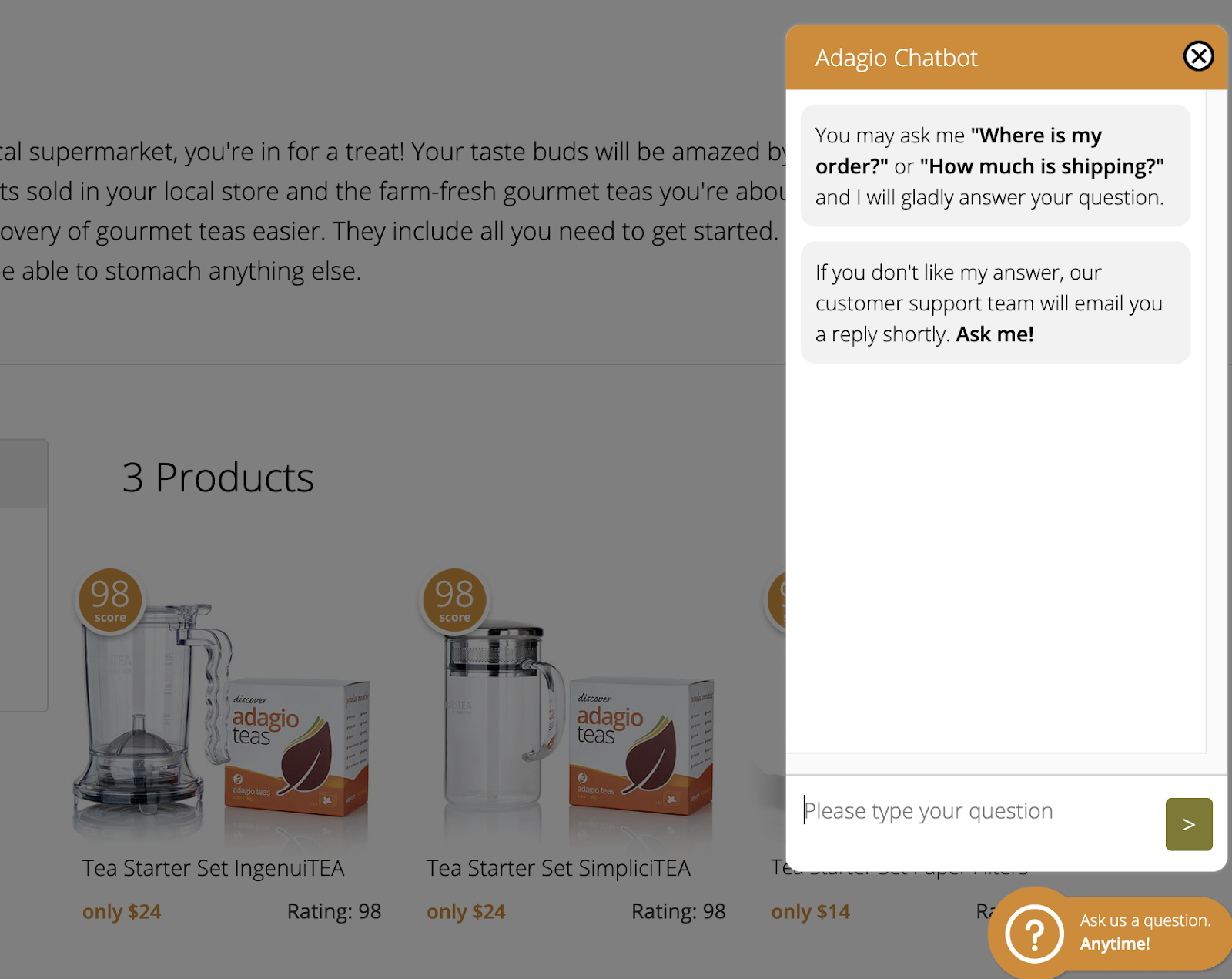
11. Allow visitors to sign up for inventory updates.
In an ideal world, you would always have items available at the moment a customer wants something. In this world, no matter how carefully you plan, demand will occasionally outpace supply. When a visitor wants an item and you can’t provide it, that creates the risk of a negative experience. But you can help salvage it by giving customers a way to sign up for notifications when it’s back in stock.
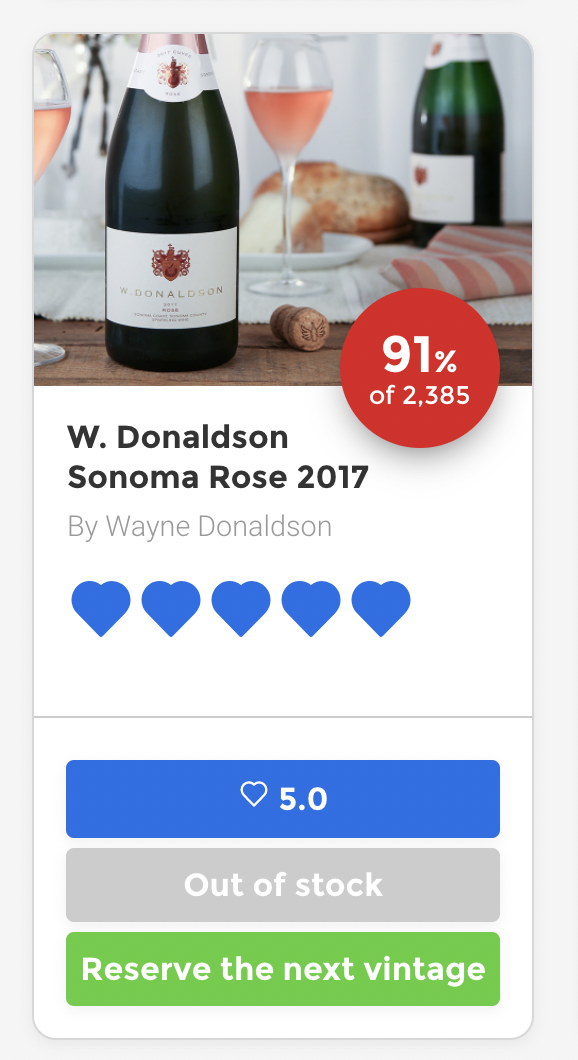
This is another way you make your eCommerce site a little more interactive, and ensure you have a way to stay in touch with visitors that are interested in a product.
12. Personalize your forms.
You’re on the website of one of your favorite brands, and see the offer for an ebook you want to check out. When you click to download it, you’re faced with a form that has a bunch of different fields. But you’re already on this brand’s radar. You know they already have your name, email address, and details about what you like. Being asked to provide it all again is irritating.
You can save your visitors from that irritation by personalizing your forms based on what you already know. HubSpot calls this using “smart fields.” This is a useful form of personalization for any eCommerce brand that tends to ask for a lot of information in exchange for downloads or offers.
13. Create relevant landing pages.
A lot of the time when someone comes to your website, they’re looking for something particular. Maybe they came to you via an ad on social media or through Google, but either way, the link they clicked on promised something specific. If they clicked on an ad for birdseed and got dropped onto a home page mostly focused on dog and cat products, that’s an inconvenience at best.
Make sure the page your visitors land on matches whatever they were promised in the link that led them there. If you run pay-per-click ads that emphasize a particular deal, the landing page should feature that deal front and center. If they click on a link that promises resources about taking care of pet birds, the page they land on should be bird focused.
14. Autofill checkout information.
Converting a customer for the first time is a big win. Getting them to come back and buy from you again is an even bigger one.
For repeat customers, you want to make the check out process as easy as possible. If they created an account the last time they were on your website, you can simplify the purchasing process by giving them the option to autofill all the checkout information for subsequent purchases. That makes things easier for them. And streamlining the checkout process increases the likelihood visitors will complete a purchase, which is good for you.
15. Make reordering easy.
A lot of eCommerce businesses sell the kind of products customers are likely to buy over and over again. You can help encourage those re-orders by remembering the past purchases a customer has made and making it easy to add them to their cart again.
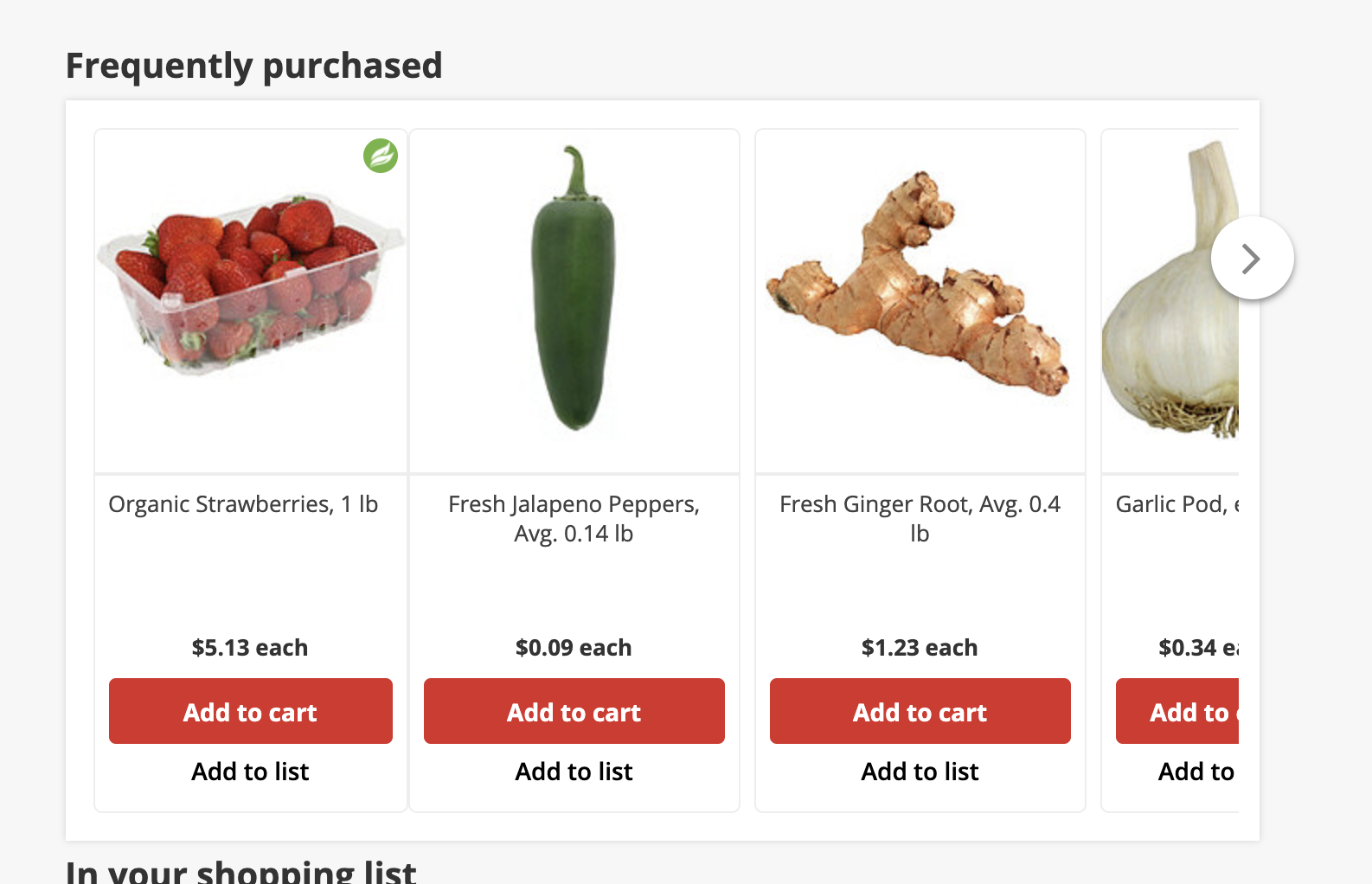
This can serve to help them keep from forgetting something they want, makes their shopping experience more convenient, and can lead to higher order sizes all at the same time.
Personalization Pays
The eCommerce experience may lack many of the personal touches that small businesses can bring to one-on-one interactions in person, but you can still create a unique experience for visitors using personalization.
Personalization can add relevance and convenience to the eCommerce shopping experience for customers, and can lead to higher sales and increased loyalty for businesses. It’s a win-win proposition all around.


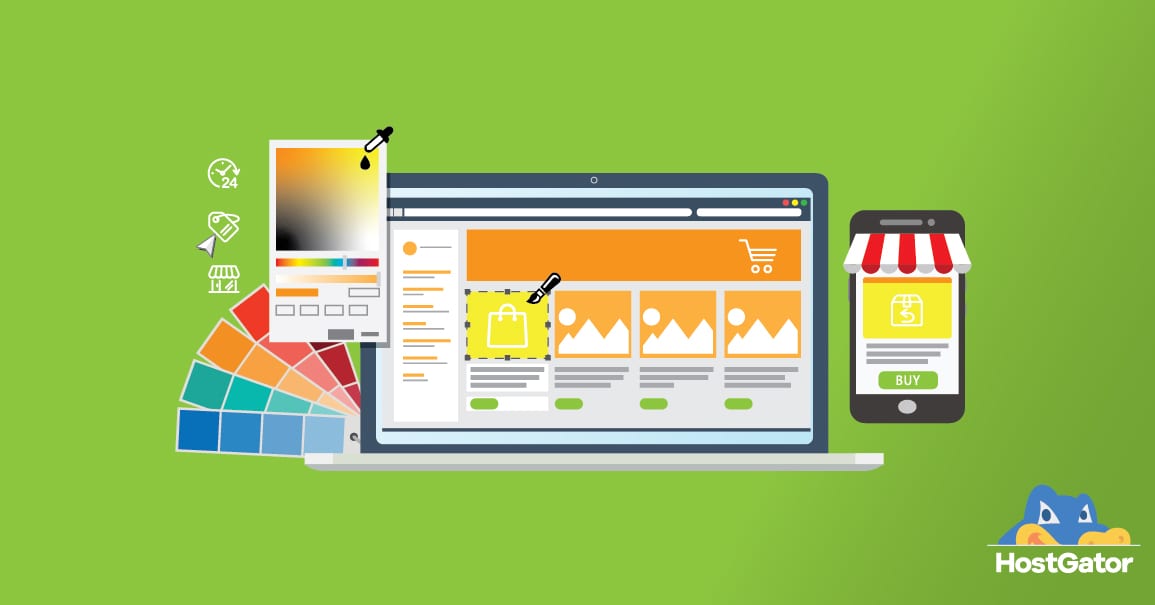

![Yes, B2B Websites Can Use Personalization Too [Here’s How]](https://mdvirtue.com/wp-content/uploads/2022/02/Yes-B2B-Websites-Can-Use-Personalization-Too-Heres-How-400x250.jpeg)

0 Comments